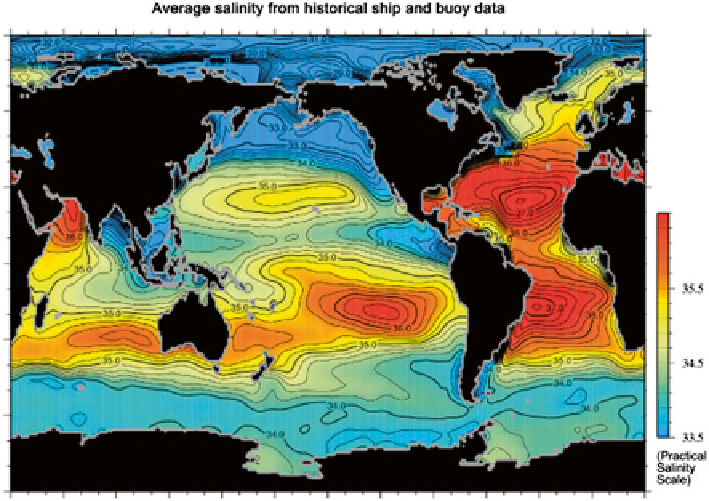Environmental Engineering Reference
In-Depth Information
Fig. 1
World ocean's surface salinity (Source: Antonov et al.
2010
, NOAA National Oceanographic
Data Center)
the higher was the salinity. Further, during ballast water discharge of this vessel the
salinity was measured over time. Over time, i.e. towards the end of the tank empty-
ing process, the salinity value increased (Gollasch et al.
2012
).
This is a clear indication that salinity sampling for compliance control is not trivial
and that more than one sample may need to be taken to cover potentially varying
salinities of ballast water in the same tank. This may either be done by lowering a
salinity meter to different depths in a ballast tank or by taking multiple samples from
the ships ballast water discharge pipe during the water discharge of the tank.
Documenting the presence of coastal biota as a D-1 standard compliance control
test is also of a limited value as very few organisms are restricted in their occurrence
to coastal waters alone. Candidate species for this approach include, e.g., harpacti-
coid copepods and barnacles. Most barnacles, but not all, are fouling species found
along the tidal zone of hard-bottom shores. Therefore their presence in a ballast water
sample could indicate coastal origin of the water. However, barnacles are also fre-
quently found in the biofouling of vessels. It is theoretically possible that two vessels
follow each other closely and the barnacles in the hull fouling of the fi rst vessel may
release their larvae into the water and these larvae may be pumped into a ballast tank
of the second vessel during a ballast water exchange operation. In this scenario the
exchanged ballast water, although exchanged in mid-ocean, may contain barnacle
larvae from the hull fouling of the fi rst vessel thereby indicating coastal origin. Adult
barnacles also occur inside ballast tanks in the fouling on the tank walls (Gollasch

Search WWH ::

Custom Search